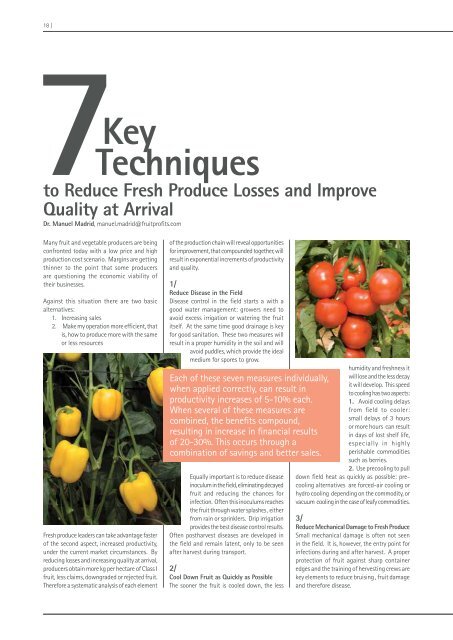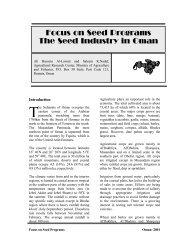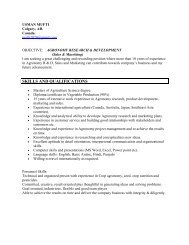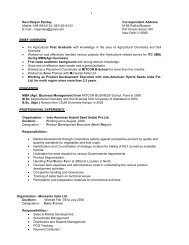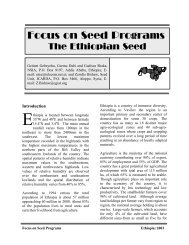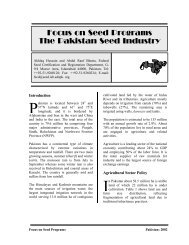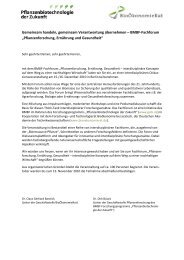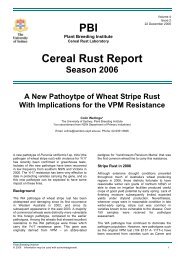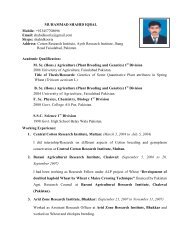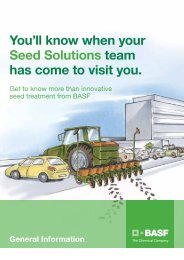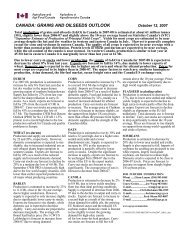Download newsletter - SeedQuest
Download newsletter - SeedQuest
Download newsletter - SeedQuest
Create successful ePaper yourself
Turn your PDF publications into a flip-book with our unique Google optimized e-Paper software.
18 |<br />
7Key<br />
Techniques<br />
to Reduce Fresh Produce Losses and Improve<br />
Quality at Arrival<br />
Dr. Manuel Madrid, manuel.madrid@fruitprofits.com<br />
Many fruit and vegetable producers are being<br />
confronted today with a low price and high<br />
production cost scenario. Margins are getting<br />
thinner to the point that some producers<br />
are questioning the economic viability of<br />
their businesses.<br />
Against this situation there are two basic<br />
alternatives:<br />
1. Increasing sales<br />
2. Make my operation more efficient, that<br />
is, how to produce more with the same<br />
or less resources<br />
Fresh produce leaders can take advantage faster<br />
of the second aspect, increased productivity,<br />
under the current market circumstances. By<br />
reducing losses and increasing quality at arrival,<br />
producers obtain more kg per hectare of Class I<br />
fruit, less claims, downgraded or rejected fruit.<br />
Therefore a systematic analysis of each element<br />
of the production chain will reveal opportunities<br />
for improvement, that compounded together, will<br />
result in exponential increments of productivity<br />
and quality.<br />
1/<br />
Reduce Disease in the Field<br />
Disease control in the field starts a with a<br />
good water management: growers need to<br />
avoid excess irrigation or watering the fruit<br />
itself. At the same time good drainage is key<br />
for good sanitation. These two measures will<br />
result in a proper humidity in the soil and will<br />
avoid puddles, which provide the ideal<br />
medium for spores to grow.<br />
Each of these seven measures individually,<br />
when applied correctly, can result in<br />
productivity increases of 5-10% each.<br />
When several of these measures are<br />
combined, the benefits compound,<br />
resulting in increase in financial results<br />
of 20-30%. This occurs through a<br />
combination of savings and better sales.<br />
Equally important is to reduce disease<br />
inoculum in the field, eliminating decayed<br />
fruit and reducing the chances for<br />
infection. Often this inoculums reaches<br />
the fruit through water splashes , either<br />
from rain or sprinklers. Drip irrigation<br />
provides the best disease control results.<br />
Often postharvest diseases are developed in<br />
the field and remain latent, only to be seen<br />
after harvest during transport.<br />
2/<br />
Cool Down Fruit as Quickly as Possible<br />
The sooner the fruit is cooled down, the less<br />
humidity and freshness it<br />
will lose and the less decay<br />
it will develop. This speed<br />
to cooling has two aspects:<br />
1. Avoid cooling delays<br />
from field to cooler:<br />
small delays of 3 hours<br />
or more hours can result<br />
in days of lost shelf life,<br />
especially in highly<br />
perishable commodities<br />
such as berries.<br />
2. Use precooling to pull<br />
down field heat as quickly as possible: precooling<br />
alternatives are forced-air cooling or<br />
hydro cooling depending on the commodity, or<br />
vacuum cooling in the case of leafy commodities.<br />
3/<br />
Reduce Mechanical Damage to Fresh Produce<br />
Small mechanical damage is often not seen<br />
in the field. It is, however, the entry point for<br />
infections during and after harvest. A proper<br />
protection of fruit against sharp container<br />
edges and the training of hervesting crews are<br />
key elements to reduce bruising , fruit damage<br />
and therefore disease.


